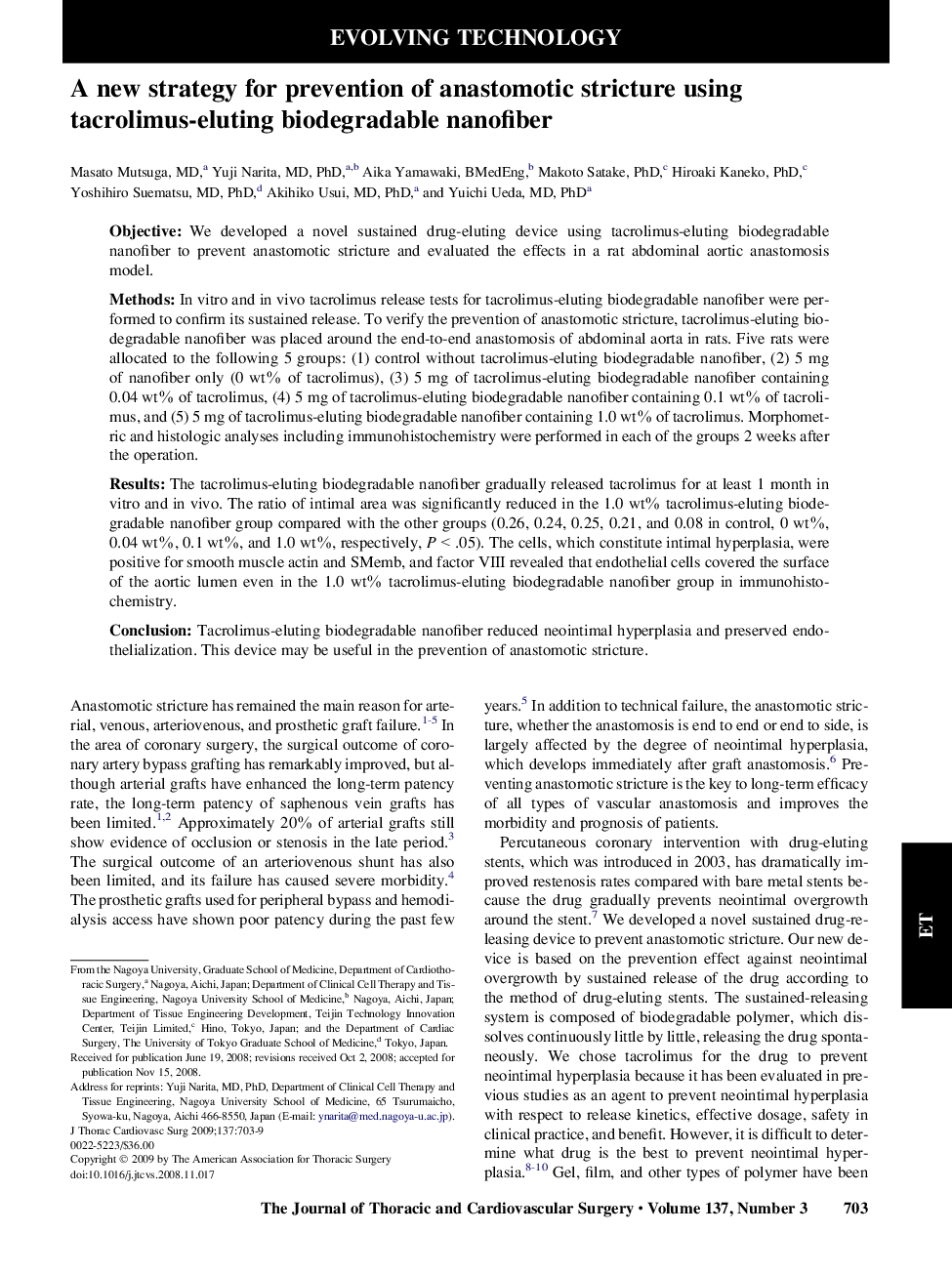| Article ID | Journal | Published Year | Pages | File Type |
|---|---|---|---|---|
| 2985829 | The Journal of Thoracic and Cardiovascular Surgery | 2009 | 7 Pages |
ObjectiveWe developed a novel sustained drug-eluting device using tacrolimus-eluting biodegradable nanofiber to prevent anastomotic stricture and evaluated the effects in a rat abdominal aortic anastomosis model.MethodsIn vitro and in vivo tacrolimus release tests for tacrolimus-eluting biodegradable nanofiber were performed to confirm its sustained release. To verify the prevention of anastomotic stricture, tacrolimus-eluting biodegradable nanofiber was placed around the end-to-end anastomosis of abdominal aorta in rats. Five rats were allocated to the following 5 groups: (1) control without tacrolimus-eluting biodegradable nanofiber, (2) 5 mg of nanofiber only (0 wt% of tacrolimus), (3) 5 mg of tacrolimus-eluting biodegradable nanofiber containing 0.04 wt% of tacrolimus, (4) 5 mg of tacrolimus-eluting biodegradable nanofiber containing 0.1 wt% of tacrolimus, and (5) 5 mg of tacrolimus-eluting biodegradable nanofiber containing 1.0 wt% of tacrolimus. Morphometric and histologic analyses including immunohistochemistry were performed in each of the groups 2 weeks after the operation.ResultsThe tacrolimus-eluting biodegradable nanofiber gradually released tacrolimus for at least 1 month in vitro and in vivo. The ratio of intimal area was significantly reduced in the 1.0 wt% tacrolimus-eluting biodegradable nanofiber group compared with the other groups (0.26, 0.24, 0.25, 0.21, and 0.08 in control, 0 wt%, 0.04 wt%, 0.1 wt%, and 1.0 wt%, respectively, P < .05). The cells, which constitute intimal hyperplasia, were positive for smooth muscle actin and SMemb, and factor VIII revealed that endothelial cells covered the surface of the aortic lumen even in the 1.0 wt% tacrolimus-eluting biodegradable nanofiber group in immunohistochemistry.ConclusionTacrolimus-eluting biodegradable nanofiber reduced neointimal hyperplasia and preserved endothelialization. This device may be useful in the prevention of anastomotic stricture.
